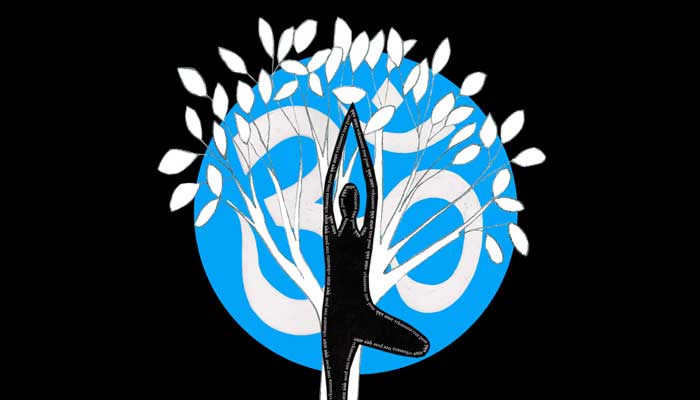Most modern yoga classes in London are predominantly asana based with some pranayama, a short relaxation at the end, and maybe some chanting. I remember when I did 30 days of a popular style of hot yoga and many people chose to leave before Savasana had even begun.
I suppose it’s easy to get all purist about it and say how sad it is that people think yoga is just another fitness class with some breath work. However, originally it was the asana practice that attracted me to yoga, so who am I to judge? I liked that yoga asanas made me feel relaxed and helped to keep me flexible.
With time, I became interested in the other limbs of yoga which are outlined in Patanjali’s Yoga Sutra. Yoga philosophy and theory started to really fascinate me, and I developed a regular meditation practice. I also become interested in meditating within asanas as well as experiencing more dynamic styles of yoga as a moving meditation.
In all honesty though, I’ve secretly been a bit confused about modern yoga practices. I will often tell people that yoga asanas were originally practised thousands of years ago, to help people sit still in meditation. It makes a lot of sense — in order to sit still and calm the mind, we must first move the body.
Anyone who has spent 10 days on a silent Vipassana course where you meditate for up to 10 hours a day will be familiar with the urge to move. When you sit still for that long, the body just has to stretch.
It was when I started to practise Ashtanga yoga, however, that I felt myself questioning what I was doing. I fell in love with the practice of Ashtanga yoga, but was surprised by how hard and physically demanding the primary series was. To me, it was far from a beginner’s practice. It felt incredibly athletic and dare I say — it reminded me of gymnastics.
Part of me wondered when I first started practising Ashtanga, if the advanced asanas and very contorted poses were really necessary if eventually we were just moving to be able to sit still.
A few weeks ago, I got some answers. I listened to a BBC Radio 4 podcast called the The Secret History of Yoga. It’s not going to be up on the web for much longer but here’s the link anyway in case you make it in time. It’s definitely worth listening to.
If you didn’t get chance to listen to it, the podcast suggests that modern yoga — the Ashtanga and Vinyasa flow styles — may have been influenced by 19th century Scandinavian gymnastics, which really fascinated me and was something I’d never heard before but makes a lot of sense.
When I started to look into this, I found that other people had come to similar conclusions — that modern yoga had been influenced by Scandinavian gymnastics. This Yoga Journal article — The Roots of Yoga: Ancient + Modern by Mark Singleton gives a really detailed explanation.
So, going back to my original question, should a yoga session be predominantly asana based?
I think if you go to a yoga class — any class — and you enjoy it, whether you’re going to relax, to connect body mind and soul, seek greater truths about yourself and the world, or just get fitter — then that’s OK. All these reasons for going are good and we shouldn’t get judgemental about it.
Now I have finished my first yoga teacher training, I feel that I too should at least make people aware that asana practice is just one branch of yoga and teach meditation and pranayama to those who would like to learn.
So, should we accept that modern yoga is vastly different from what was practised thousands of years ago and be open to embracing change? Is it OK that most modern classes are predominantly asana based? Will the original meaning and origins of yoga be lost completely if we continue to practise in this way? Or should we accept that yoga like art is continuously evolving and adapting to change and that’s part of the beauty of it?
Image: the featured image was designed by my Mum and I and is available in three different sizes as a yoga art print on our Etsy shop Yoga Spirit Art

